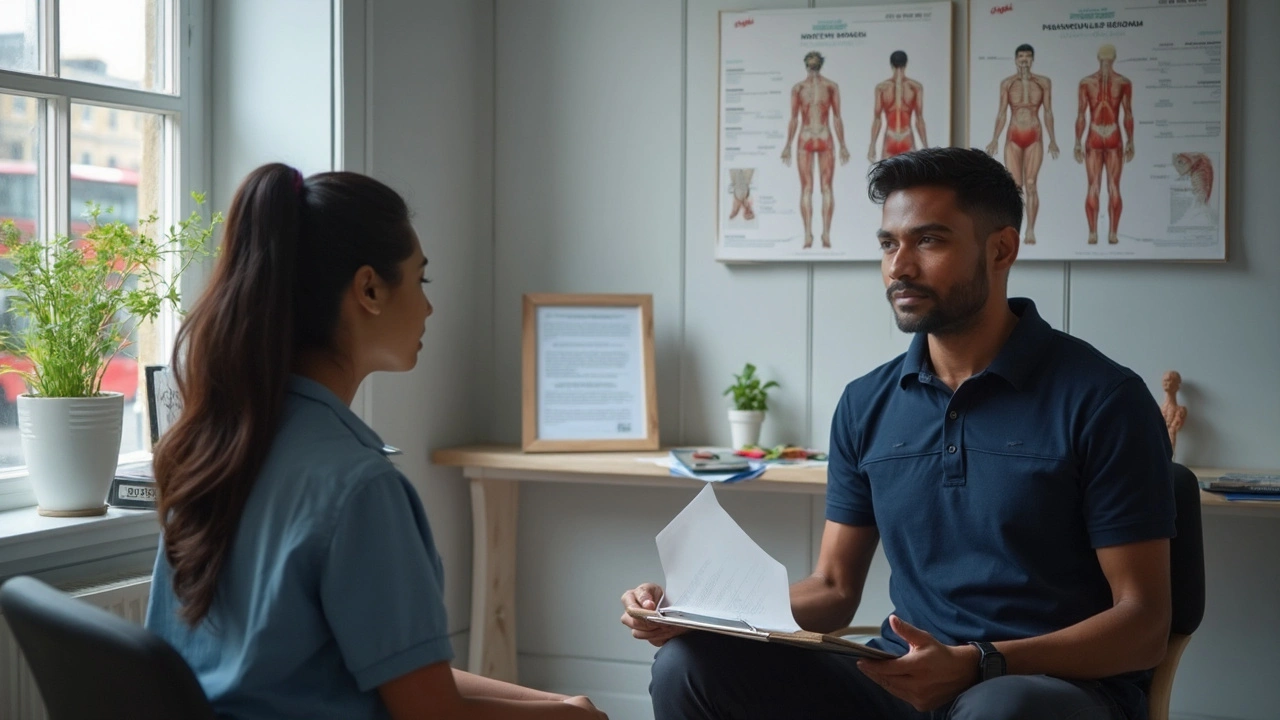Trigger Point Therapy – Quick Relief for Stubborn Knots
If you’ve ever felt a hard lump in a muscle that aches when you press it, you’ve met a trigger point. These tiny knots can turn a simple movement into a painful experience. The good news is you don’t need a pricey clinic to get relief. With the right technique, a few minutes of pressure can melt the knot and send pain packing.
What Is a Trigger Point?
A trigger point is a tiny, hyper‑active spot inside a muscle fiber. It feels like a pea‑size knot and can cause a dull ache, a sharp sting, or even refer pain to another area (like a knot in the shoulder hurting the hand). They form when a muscle is over‑used, stressed, or held in one position for too long. Common spots include the neck, upper back, glutes, and calves.
When you press on a trigger point, the muscle fibers contract and release. This action improves blood flow, flushes out waste, and restores normal length to the muscle. The result is less pain, more range of motion, and a feeling of the body working together again.
How to Use Trigger Point Therapy Safely
Start with a clean, comfortable space. Sit or lie down so the muscle you’re targeting is relaxed. Use your fingers, a massage ball, or a foam roller – whatever feels firm but not painful.
- Locate the knot. Slide your hand along the muscle until you feel a tender spot that hurts when you press.
- Apply steady pressure. Press into the knot with 4–6 kg of force (about the pressure of a firm handshake). Hold for 10–30 seconds. You may feel a twitch or a brief increase in pain – that’s normal and means the fibers are releasing.
- Release slowly. After the hold, ease off the pressure gradually. This helps the muscle settle into a relaxed state.
- Stretch the muscle. Gentle stretching right after the release locks in the new length and prevents the knot from coming back.
Do this 2–3 times for each knot, but don’t over‑do it. Too much pressure can bruise the tissue. If the pain spikes or you feel sharp shooting pain, stop immediately and try a lighter touch.
For bigger areas like the glutes or calves, a tennis ball or a specialized trigger point roller works well. Roll slowly, pause on the sore spot, and repeat the hold‑release cycle.
Hydration matters. After a session, drink a glass of water to help flush out metabolic waste that’s been released from the muscle.
Trigger point therapy isn’t a cure‑all, but it’s a powerful tool you can add to your daily routine. Combine it with regular movement, proper posture, and occasional professional massage for the best results.
Got a persistent knot that won’t budge after a few tries? It might be tied to deeper issues like joint misalignment or chronic inflammation. In those cases, seeing a qualified therapist or physiotherapist can give you a tailored plan.
Bottom line: a few minutes of focused pressure, done safely, can turn a painful knot into a smooth, relaxed muscle. Give it a try next time you feel that familiar lump, and you’ll notice the difference right away.
Neuromuscular Massage: How It Relieves Pain, Improves Mobility, and Boosts Quality of Life
See how neuromuscular massage eases pain, loosens tight spots, and helps sleep and stress. Get a plan, what to expect, safety tips, and how to pick a therapist.
- Sep, 1 2025
- 0 Comments
